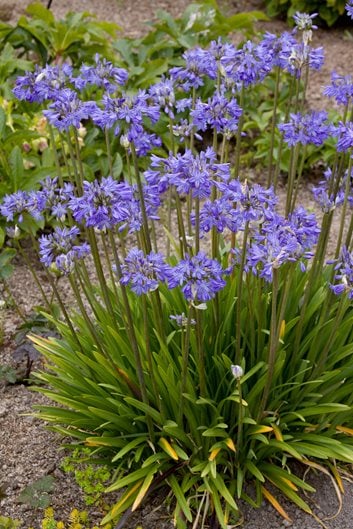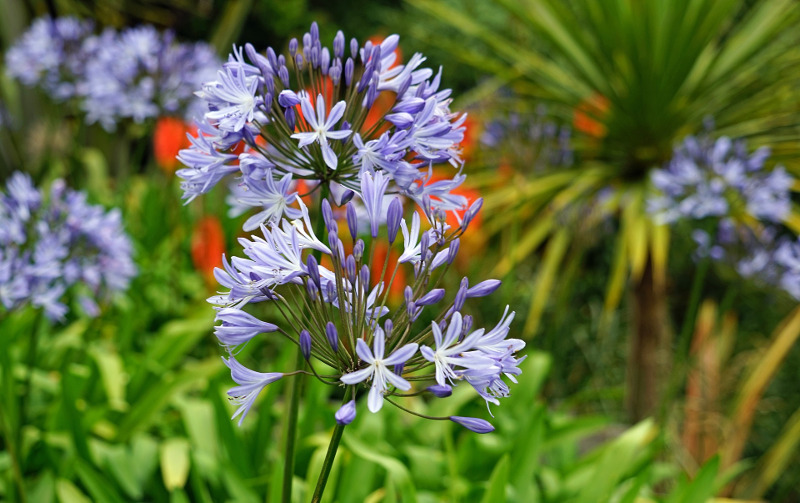Agapanthus Growing Conditions: Dirt, Sunshine, and Watering
Agapanthus Growing Conditions: Dirt, Sunshine, and Watering
Blog Article
Mastering the Art of Agapanthus Care: Important Steps for Healthy And Balanced Growth and Vibrant Blossoms
In the world of gardening, the farming of agapanthus stands as a gratifying endeavor for those who look for to nurture these classy blooming plants. From choosing the right range to understanding pruning strategies, the journey in the direction of cultivating thriving agapanthus plants is complex and holds the crucial to unlocking the full capacity of these organic gems.

Selecting the Right Agapanthus Range

When picking the ideal Agapanthus selection for your yard, take into consideration aspects such as environment suitability, flower shade, and development behavior. Additionally, consider the environment in your region to ensure the Agapanthus variety you pick can flourish in your certain problems. Recognizing the growth practice of different Agapanthus ranges is vital for proper placement within your garden.
Perfect Planting Conditions
Considering the optimal environmental requirements is vital for effective Agapanthus growing. Agapanthus flourishes in well-draining dirt with a somewhat acidic to neutral pH degree. When growing, pick a location that gets full sunlight to partial color. In hotter environments, offering some mid-day color can avoid scorching of the fallen leaves. Agapanthus plants are sensitive to cold temperature levels and need to be protected from frost throughout cold weather.
To make certain healthy growth and vibrant blossoms, plant Agapanthus bulbs at a deepness of about 2-4 inches and space them 8-12 inches apart. Mulching around the base of the plants helps maintain dampness and suppresses weed development.
Watering and Feeding Tips
Preserving appropriate dampness degrees and giving essential nutrients are crucial elements in the care program for Agapanthus plants. It is important to strike a balance when it comes to watering Agapanthus. If overwatered, these plants prefer regularly moist soil however are at risk to root rot. Throughout the growing period, water deeply when a week, ensuring the dirt is well-draining to stop waterlogging. In hotter environments or throughout durations of dry spell, even more regular watering might be needed to keep the dirt evenly damp. Nonetheless, reduce watering in the winter to stop water logged problems.
Feeding Agapanthus is essential for promoting healthy growth and prolific blooms. Use a well balanced fertilizer, such as a 10-10-10 formula, in the early spring as brand-new development emerges. Repeat this application every 6-8 weeks throughout the growing period. Prevent excessive fertilization, as it can bring about lavish foliage at the cost of blooms. Constantly adhere to the producer's guidelines for appropriate dilution and application techniques. By adhering to these watering Click This Link and fertilizing ideas, you can guarantee your Agapanthus plants flourish and generate vibrant, resilient blooms.
Trimming Strategies for Agapanthus
Trimming Agapanthus plants at the suitable times and with published here appropriate techniques is vital for preserving their wellness and promoting optimal growth and flowering. The optimal time to prune Agapanthus is in late winter months or early springtime prior to brand-new growth arises.
For flowered stems, wait till the blooms have withered and after that trim them back to the base. This not only cleans the plant's look however also encourages the development of new flower buds. Deadheading invested flowers can also redirect the plant's energy into creating more blooms instead than setting seeds. Nonetheless, if you wish to collect seeds for proliferation, leave some flowers to completely dry and fully grown on the plant.
Bear in mind to utilize clean, sharp tools to make specific cuts and reduce the danger of introducing diseases. Agapanthus. Normal trimming will aid maintain your Agapanthus looking healthy and balanced and neat while guaranteeing a bountiful display screen of attractive blossoms
Handling Common Parasites and Illness
After guaranteeing appropriate pruning methods for Agapanthus, it is vital to deal with common bugs and diseases that can influence the wellness and vitality of these plants. Agapanthus plants are usually sturdy but can still come down with particular problems. One common parasite that impacts Agapanthus is the Agapanthus gall midget. This little, orange fly lays its eggs in the vegetation, causing distorted growth and blossom buds that fall short to open. To fight this pest, trim and destroy any type of affected plant parts and consider making use of insecticidal soap.
Another typical concern is fungal leaf area, which offers as dark lesions on the leaves. To stop fungal illness, guarantee great air flow around the plants, stay clear of overhead watering, and eliminate any infected leaves immediately. Additionally, Agapanthus plants can suffer from root rot if they are planted in inadequately draining pipes dirt. To stop this, plant Agapanthus in well-draining soil and avoid overwatering. By being attentive and taking prompt action against insects and conditions, you can aid your Agapanthus plants thrive and generate dynamic blossoms.

Conclusion
Finally, grasping the art of agapanthus treatment includes picking the appropriate range, offering suitable growing conditions, correct watering and fertilizing, proper pruning strategies, and dealing with typical parasites and diseases. By adhering to these essential steps, you can guarantee healthy growth and dynamic blossoms for your agapanthus plants. Remember to on a regular basis monitor and preserve your plants to promote their overall wellness and durability.
To make sure healthy and balanced development and vibrant flowers, plant Agapanthus light bulbs at a deepness of about 2-4 inches and room them 8-12 inches apart. By following these watering and feeding tips, you can guarantee your Agapanthus plants flourish and produce vivid, lasting flowers.
One typical pest that influences Agapanthus is the Agapanthus gall midge. In addition, Agapanthus plants can experience from root rot if have a peek at this site they are planted in poorly draining dirt. By following these essential actions, you can ensure healthy and balanced growth and lively blooms for your agapanthus plants.
Report this page